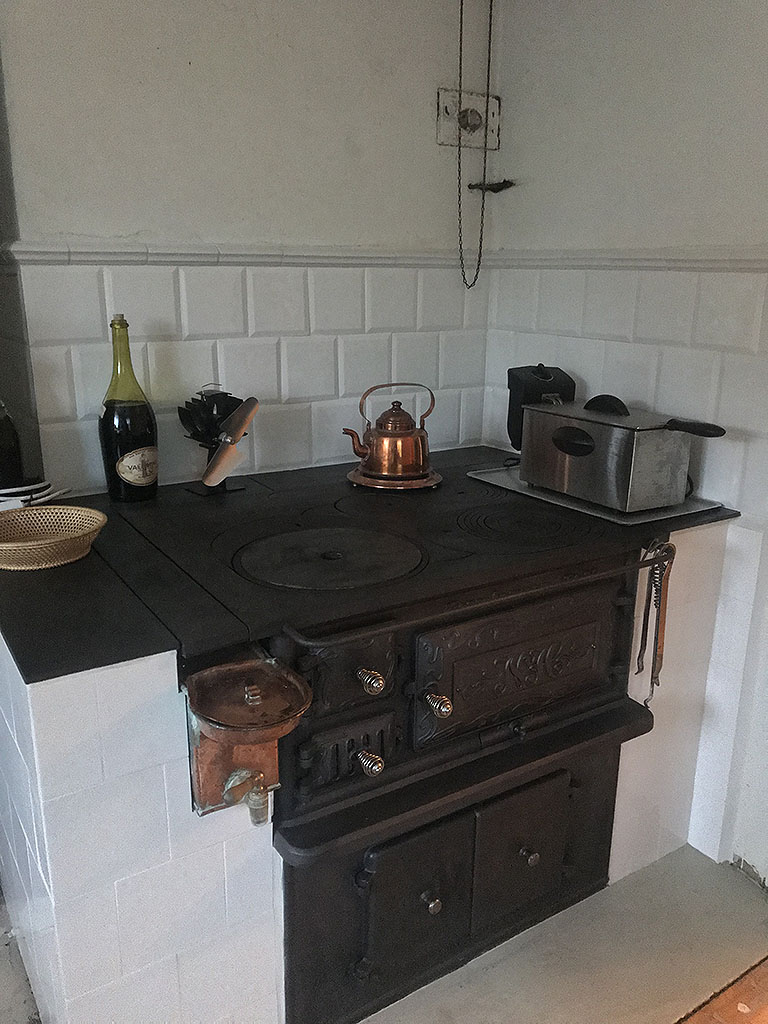Last weekend, we were able to attend a rare event that was part of Uppsala's Culture Night (Kulturnatten Uppsala). Once a year, several cities hold a "culture night" where there are certain events in particular areas of a city celebrating this night, mostly to show the history and what is current in that specific place. There would be shows in theatres, even food festivals at times. Most members of the community take a break from their busy schedules to partake in these events. It's both educational and entertaining for adults and children alike.
 |
| Entrance to Focksta Kvarn Museum, one of several houses in the estate. |
Focksta Kvarn has a remarkable history of producing about 100 sacks of flour in the 50's. Located in Sävaån (valley of Säva) between Uppsala och Örsundsbro, it supplied flour to surrounding areas when it was still operational. To get there, drive on Highway E55 towards Uppsala, turn left at Säva. Follow the road for about 3 kilometers and you will see the sign, turn right and continue over the cemented bridge and you will be arriving at the sprawling estate of Focksta Kvarn.
 |
| Notice By The Door |
At the ground floor, machineries are stored which were once used for this mill.
 |
| Rensmaskin |
 |
| Stenmalet Vetemjöl |
 |
| Classic Singer Sewing Machine |
 |
| Vattenhjul. Water Wheel |
On the second floor is where a bit of carpentry can be done, when needed. This was where the group gathered to hear about the history of Focksta Kvarn.
 |
| Inte Bara Mala |
Below is a picture of visitors starting to gather for a speech from the owner, to talk about the history of the mill. At one corner, one can buy apple pie, coffee, and tea. It is the usual snack (or fika, in Swedish) during autumn, when apples are harvested for baking or to be made as apple sauce as well as apple juice.
Anders Brunnberg arrived in Focksta in 1803 and purchased the entire estate, including the houses and the mill, which was significantly smaller back then.
He had the mill extended, and built a sawmill afterwards.
The mill is powered by a water wheel that is driven by currents from the surrounding waters. During low season, when it is winter and the water is freezing, there is not enough power to to even start the water wheel.
The sawmill acted as support during this low season when they had to do maintenance, renovate the wheels, and provide the means to power the millhouse. They usually spent about a month just doing this.
 |
| Mikael dressed as Anders Brunnberg in a 150-year old coat as part of his presentation. |
Elof Gottfrid, a descendant and owner of the mill, considered the water-driven millhouse to be insufficient. Inevitably, in 1914, he brought in a locomobile (lokomobil), a type of machinery that acted as replacement as well as extension to the waterwheel.
After the 1940s when electric motors where introduced, the business was at its largest. Birger Brunnberg was the last owner of the mill while it was still on production.
 |
| A blurry Mikael at the Millhouse, just before his presentation. |
Towards one side of the second floor is a small port where sacks can be delivered through what seems to be a system of chains, ropes, and wooden installations; a mini elevator. The sacks can just be sent down this hatch instead of being carried down through the winding staircase, saving both time and labour.
 |
| Utbyggnad (Addition in English) |
 |
| Smedjan. The Forge. |
Towards the back of Focksta Kvarn, you can find the charming country house in which the owners live, Mikael and Lindy.
They have renovated parts of the house to maintain its classic charm, In the kitchen, you can find a refurbished cast iron stove that was the standard back in the 1800's.
 |
| Refurbished Cast Iron Stove |
Some of the photos were dark, it's a shame that I was not able to take pictures with the use of a high definition camera. Read more on their website.












Comments
Post a Comment